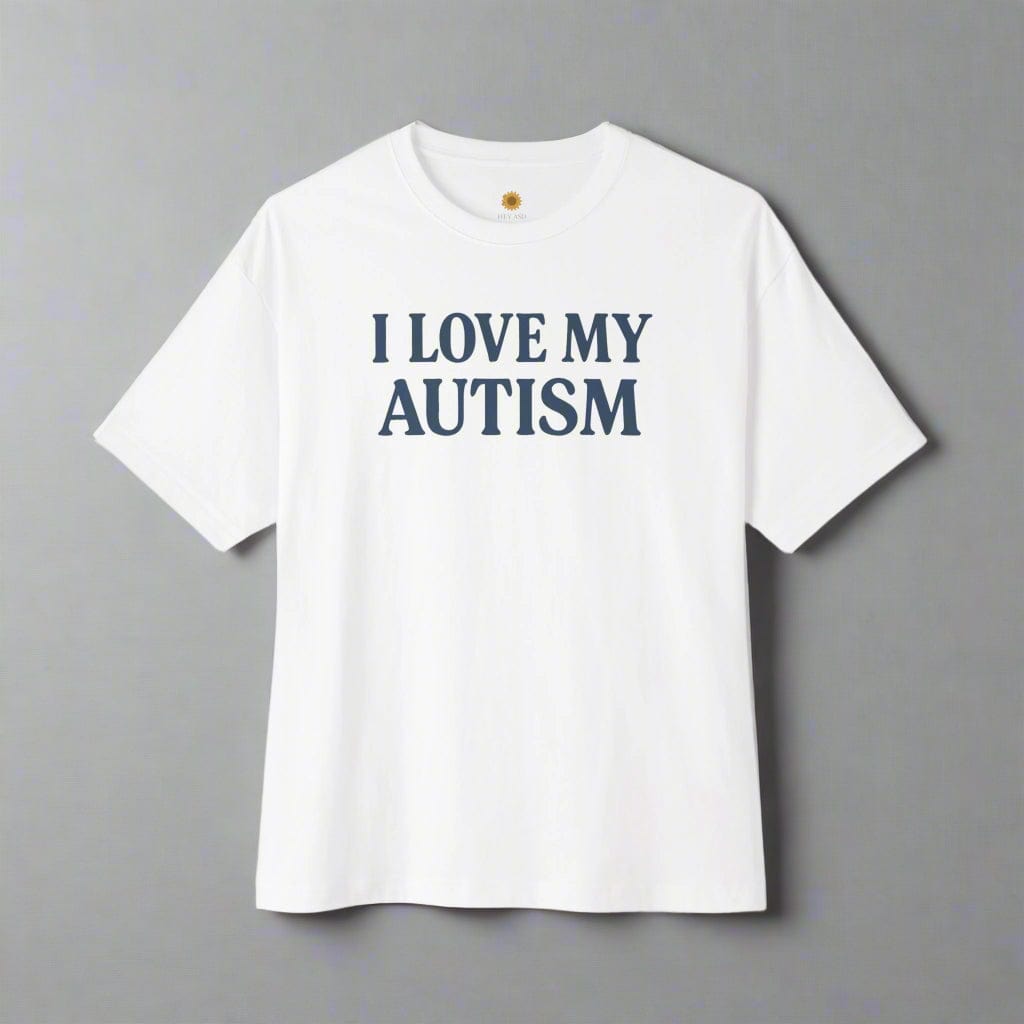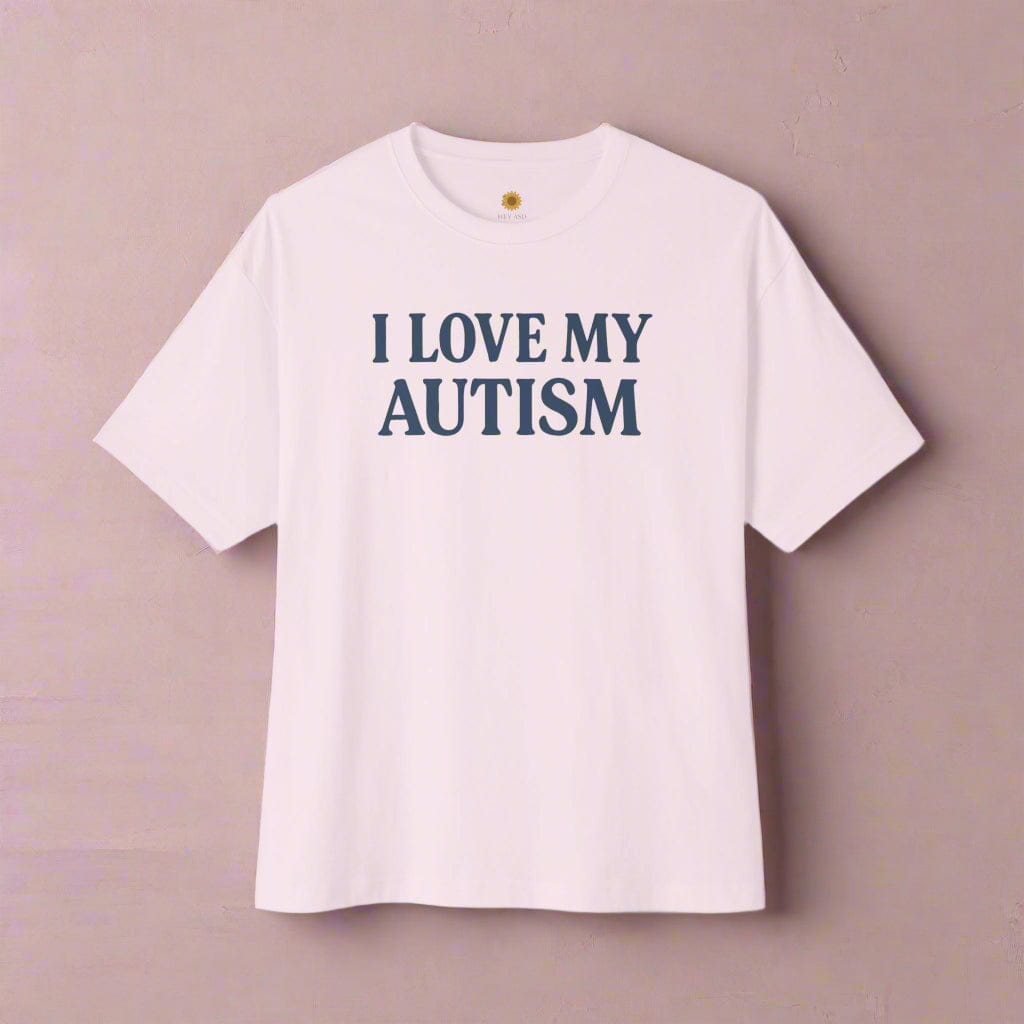Autistic Infodumping Explained: Why Sharing Deeply Is an Act of Trust and Connection
Autistic infodumping is more than talking, it’s a way of saying, “You matter enough for me to share what lights me up.” This guide explores why autistic people infodump, how it strengthens relationships, and how to receive it with empathy.

Written by the HeyASD Editorial Team
Have you ever been so excited about something that you just had to share every detail with someone you trust? For many autistic people, this isn’t oversharing — it’s a natural communication style known as autistic infodumping. It’s often misunderstood as talking too much, but in truth, it’s a beautiful and meaningful way to connect.
“When I infodump, I’m not trying to dominate the conversation. I’m letting you see the part of me that feels most alive.”
— Autistic adult, lived experience
Infodumping is an act of trust, joy, and authenticity. It’s how many autistic individuals say, “You matter enough for me to share what lights me up.” When reframed with empathy, it becomes one of the most genuine forms of communication — an open invitation into someone’s inner world.
What Is Autistic Infodumping?
Autistic infodumping is when an autistic person shares a large amount of information about a topic they are passionate about. This sharing is often very detailed, enthusiastic, and can last for a long time. It is a natural way for many autistic individuals to communicate and express what they love. This style of communication focuses on facts, logic, and deep knowledge.
While some may see it as a monologue, for the autistic person, it is a way of connecting. It’s not about ignoring the other person; it is about sharing a piece of their world. Unlike small talk, info dumping is a deep dive into a subject that brings them immense joy, and they want to share that joy with you.
The Meaning and Origin of Infodump in Autism
The term "infodump" comes from the autistic community to describe this unique style of communication. It means sharing a great deal of detailed information about a topic of intense interest, often without pausing for the other person to respond. This is not meant to be a one-sided conversation but rather a pure expression of passion and excitement.
This way of talking is a natural part of how many on the autism spectrum connect. It is a way of showing what they know and sharing their enthusiasm with others. An infodump session can feel like an invitation into their inner world, where their special interests live. It is an act of vulnerability and trust.
Understanding the origin helps reframe the behavior. It is not about a lack of social skills but a different, authentic way of connecting. When an autistic person infodumps, they are sharing something that is a core part of their identity and joy. It is a way to build bonds based on shared knowledge and genuine excitement.

How Infodumping Autism Is Understood Across Communities
The perception of info dumping varies greatly between communities. Within the autistic community and among those who embrace neurodiversity, infodumping is often celebrated. It is seen as a sign of trust, a love language, and an authentic form of self-expression. It is a way to build community and connect with others who share similar interests.
However, in neurotypical social settings, info dumping can be misunderstood. It might be labeled as "talking too much," ignoring social cues, or being self-centered. This is because it does not follow the typical back-and-forth rhythm of conversation that many people are used to. These misunderstandings can be hurtful and lead autistic people to feel rejected.
Bridging this gap requires empathy and education. By learning about different communication styles, we can move past judgment and toward acceptance. Recognizing that an infodump is an expression of joy rather than a social misstep helps create more inclusive and supportive environments for everyone. It's a chance to see the world through another person's passionate perspective.
Why Do Autistic People Infodump?
Autistic people often engage in info dumping for several important reasons. It is a primary way to share the deep joy and enthusiasm they feel for their special interests. When a topic lights them up, sharing every detail is a natural way to express those strong feelings and connect with others. It can be a way of saying, “This is what I love, and I want you to see it too.”
This communication style also serves as a coping mechanism and a way to self-regulate. Focusing on a beloved topic can be calming in an overwhelming world. Expressing the thoughts and facts they have gathered can feel like a necessary release. We will now explore the specific role of special interests and the emotional drivers behind this unique form of sharing.
The Role of Special Interests and Hyperfocus
Special interests are at the very heart of autistic infodumping. These are not just hobbies but intense, passionate areas of focus. When an autistic person has a special interest, their brain can enter a state of hyperfocus, allowing them to absorb a massive amount of information on that topic. This deep knowledge creates a rich well of information they are excited to share.
The drive to infodump is directly linked to this intense focus. It is the natural outcome of spending so much time and energy on a specific subject, whether it's video games or the history of a character like Ariel from a favorite movie. The joy comes from not just knowing the information but also from sharing it.
This process is a key part of the autistic experience. It demonstrates a unique way of engaging with the world.
-
Deep Passion: Special interests provide a source of comfort, joy, and identity.
-
Knowledge Sharing: Infodumping is the channel through which this passion is expressed to others.
-
Connection: It turns a solitary interest into a shared experience, building bridges with others.
Emotional Reasons Behind Autistic Infodumping
Beyond the love for a topic, there are deep emotional reasons for autistic infodumping. It is a powerful form of self-expression. For autistic individuals who may find other forms of communication challenging, sharing detailed facts is a clear and authentic way to show who they are and what they care about. It is a way to be seen and understood on their own terms.
Sharing information is also deeply tied to sharing joy. The excitement felt about a special interest is a strong feeling, and infodumping allows that happiness to be shared with someone else. When someone listens and shows interest, it validates not just the topic but the person's feelings and identity. This can create a strong sense of connection and belonging.
Infodumping can also be a way to manage emotions. When feeling anxious or overwhelmed, retreating into a special interest can be very calming. Talking about it can help regulate those feelings and restore a sense of order. In a safe space, this act of sharing can feel like a release, reducing internal pressure and fostering emotional well-being.
Infodumping Autism vs. Oversharing
It is easy to confuse info dumping with oversharing, but they are very different. The key distinction lies in the intent and emotional driver behind the communication. Oversharing often involves revealing personal or inappropriate information, sometimes due to a lack of boundaries or social anxiety. It is not typically focused on a specific topic of interest.
Autistic infodumping, on the other hand, is driven by passion and enthusiasm for a particular subject. It is less about revealing personal secrets and more about sharing knowledge and joy. The focus is on the topic itself, not on divulging private details. The following sections will break down these differences further and explore common social perceptions.
Key Differences Between Infodumping and Oversharing
The line between info dumping and oversharing can seem blurry, but their motivations are distinct. Info dumping is sharing from a place of excitement about topics of interest. Oversharing often comes from a different emotional space, like anxiety or a need for validation, and typically involves personal information rather than factual details about a passion.
An autistic person infodumping about science fiction is sharing their joy and knowledge. Someone oversharing might reveal sensitive personal struggles to a stranger. The first is an invitation to share a passion; the second is often a misjudgment of social context. For late-diagnosed autism, understanding this difference can be a key part of self-discovery.
Here is a closer look at the key differences:
|
Feature |
Autistic Infodumping |
Oversharing |
|---|---|---|
|
Intent |
To share joy, enthusiasm, and knowledge about a special interest. |
Often stems from anxiety, a need for validation, or a misreading of social boundaries. |
|
Content |
Focused on facts, details, and information about a specific topic (e.g., trains, video games, history). |
Usually involves personal, private, or emotionally charged information about one's life. |
|
Emotional State |
Driven by excitement, passion, and a desire to connect through a shared interest. |
Can be driven by a need for comfort, attention, or a lack of social filtering. |
Social Perceptions of Autism Infodump
Social perceptions of an autism infodump can vary widely and often depend on the listener's understanding of neurodiversity. For some neurotypical people, this style of communication can be challenging to navigate. They might perceive it as one-sided or even rude because it doesn't follow the expected conversational rules of turn-taking and reading body language.
This misunderstanding is not intentional. It stems from different communication norms. A neurotypical listener might wait for pauses or nonverbal cues that an autistic speaker may not provide. As a result, they may feel overwhelmed or believe the speaker is not interested in their input, when in reality, the speaker is simply immersed in sharing their passion.
To change these perceptions, empathy is key. Instead of viewing it as a lack of social skills, it is more helpful to see it as a different, equally valid communication style. Recognizing that the person is sharing something they love can transform the interaction from confusing to connecting. It is an opportunity to practice receptive communication and appreciate a different way of being.
Infodumping as a Love Language in Autistic Communication
For many autistic people, info dumping is a profound love language. When they share an immense amount of detail about their special interests, it is a sign of deep trust and affection. They are inviting you into the world that brings them the most joy and comfort. It is their way of saying, "I feel safe with you, and I want to share my happiness."
An infodump session can be an act of vulnerability. The speaker is sharing a core part of their identity. Receiving this information with kindness and interest strengthens the bond and creates a safe space for them to be their authentic selves. The following sections explore how this builds connection and compares it to other neurodivergent communication styles.
Connection, Safety, and Self-Expression Through Infodump Autism
When an autistic person infodumps, they are doing more than just sharing facts; they are building a bridge for connection. This style of communication is a powerful tool for self-expression, allowing them to reveal their passions and intellect in a way that feels natural. By sharing what they love, they are sharing a piece of themselves.
Feeling safe is crucial for this to happen. An infodump is an act of trust. The speaker is trusting the listener not to judge or dismiss their enthusiasm. When a listener responds with acceptance, it reinforces that it is a safe space to be authentic. This safety is the foundation for a strong, meaningful relationship where both people feel valued.
This process is a beautiful form of connection. It moves beyond superficial small talk into a realm of genuine, shared interest. Whether talking about their favorite TV shows or a complex scientific theory, the act of sharing creates a bond. It is a way of saying, “If I’m infodumping to you, it means I feel safe,” and that feeling of safety is where true connection begins.
Comparing Autistic Infodumping and ADHD Infodump
While both autistic people and individuals with ADHD may infodump, there are subtle differences in their communication styles. Both are expressions of neurodiversity, but the structure and flow can vary. Understanding these distinctions helps appreciate the unique ways different brains process and share information.
Autistic infodumping is often characterized by its depth and structure. It tends to be highly focused on a specific special interest, with a logical and exhaustive presentation of facts. The goal is to provide a comprehensive overview of the topic. An ADHD infodump, however, may be more impulsive and tangential. It can jump between related topics as new thoughts arise, driven by a rush of excitement and energy.
Despite their differences, both forms of infodumping come from a place of enthusiasm.
-
Autistic Infodumping: Often deep, structured, and focused on one special interest.
-
ADHD Infodump: Can be more spontaneous, rapid, and may branch into multiple tangents.
-
Shared Trait: Both are authentic expressions of passion and an attempt to connect with others.
Supporting and Responding to Infodumping Autism
How you respond to info dumping can make a huge difference. By supporting autistic individuals in this natural form of expression, you create a safe space for them to be themselves. This involves more than just listening; it requires active engagement and empathy. Your response can either build a wall or a bridge.
It is about finding a balance where the autistic person feels heard and valued, and you feel respected as a listener. This does not mean you have to be an expert on their topics of interest. It just means showing you care about the person sharing them. The next section offers practical tips for positive and receptive communication.
Tips for Listening and Responding to Autistic Communication
Listening effectively to an autistic infodump is a skill that strengthens connection. The goal is to show you are engaged, even if you do not understand all the details. Active listening and validating responses are key. Try responding with phrases like, “That sounds fascinating!” or “Tell me more about what you love most about it.” This shows you value their passion.
Be mindful of nonverbal cues, but do not rely on typical expectations. Flexibility with eye contact can make the autistic person more comfortable. Your patient attention is more important than rigid social rules. If you get overwhelmed, it is okay to set a gentle boundary. You could say, “I love hearing about this, but my brain needs a break. Can we pick this up later?” This respects both of your needs.
Here are a few quick tips for your next infodump session:
-
Ask Questions: Inquire about details to show you are listening. It can also help you find a part of the topic you can connect with.
-
Offer Praise: Acknowledge their expertise and passion. Simple words like, “Wow, you know so much about this!” can be very affirming.
-
Be Honest, Gently: If you truly cannot focus, it is kinder to be straightforward than to pretend. Frame it around your own limitations, not their sharing.
Key Takeaways: Autistic Infodumping
- Infodumping is connection — it expresses joy, trust, and authenticity.
- It’s not oversharing; it’s a form of emotional honesty rooted in passion.
- Listening with empathy turns an infodump into a bridge for understanding.
- Special interests fuel expression, helping autistic individuals communicate deeply.
- Validation matters — feeling heard transforms how safe someone feels to be themselves.
Conclusion
Autistic infodumping is far more than a stream of facts — it’s a language of connection. When autistic people share their passions in detail, they are offering trust, joy, and vulnerability. By receiving that with care, we create relationships that honor authenticity over performance.
“If I’m infodumping to you, it means I feel safe. That’s not just communication — that’s love.”
— Autistic community member
When we shift from judgment to understanding, infodumping becomes a bridge instead of a barrier. At Hey ASD, we believe your enthusiasm is safe here — because connection starts when we allow people to express what they love, in the way that feels most natural to them.
Designed for Comfort. Made for the Autism Community.
Discover sensory-friendly t-shirts, hoodies, and décor created by autistic adults — made to feel soft, safe, and genuinely you.
Explore Comfort-First DesignsFrequently Asked Questions
Is infodumping unique to autism or can others experience it?
While info dumping is strongly associated with the autism spectrum, it is not exclusive to it. People with ADHD and even neurotypical individuals with a deep passion for certain topics of interest can infodump. However, it is a hallmark of autistic communication due to the nature of special interests and neurodiversity.
How can parents or caregivers support children who infodump?
Parents can support autistic children by creating a safe space to share their special interests. Listen with patience, show genuine interest, and celebrate their knowledge. This validation helps build their confidence and shows them that their passions are valued. Info dumping is a positive form of expression that should be encouraged.
What’s the best way to encourage mutual understanding when someone is infodumping?
To foster mutual understanding, practice receptive communication. Listen actively and ask questions. If you need a break, set a kind boundary. Explaining your own communication style and needs can also help. This creates a balanced dialogue where both people feel respected, turning a monologue into a shared connection.
What is infodumping, and why is it significant in the context of autism?
Infodumping is when autistic individuals share a large amount of detailed information about their special interests. It is significant because it is an authentic communication style driven by strong feelings of joy and passion. It is a way for them to connect with others, express their identity, and share their world.
How can understanding infodumping improve communication between autistic individuals and their peers?
Understanding that an infodump session is a sign of trust can transform interactions. Peers can learn to see past differences in body language or communication style and recognize the speaker’s enthusiasm. This fosters empathy and patience, leading to stronger, more authentic connections built on a foundation of neurodiversity acceptance.
What are some strategies for engaging with someone who is infodumping without feeling overwhelmed?
To avoid feeling overwhelmed, focus on the speaker's joy, not just the information. Practice active receptive communication by nodding and asking simple questions. It is also okay to politely set boundaries. Suggesting a pause or a specific time to continue the conversation creates a safe space for mutual understanding.
How can parents and educators support autistic children in expressing their interests through infodumping?
Parents and educators can provide opportunities for autistic children to share their special interests. Create dedicated time for them to talk about their passions. This support validates their communication style and boosts their confidence. Encouraging them to use journals, presentations, or even an autism app or autism AI tools can also be a great approach.
On This Page
Frequently asked questions
Why do autistic people infodump?
How is autistic infodumping different from oversharing?
What does infodumping feel like for an autistic person?
How can you tell if someone is infodumping?
How can I respond supportively when someone infodumps?
Is infodumping connected to special interests in autism?
Do people with ADHD infodump too?
Can infodumping be part of autistic burnout recovery?
How can workplaces or relationships support autistic communication styles?

About the HeyASD Editorial Team
Autistic‑owned • Values‑led • Sensory‑friendly design
We are autistic creators, writers, and advocates dedicated to producing resources that are practical, sensory-aware, and grounded in lived experience. Our mission is to make information and products that support the autistic community accessible to everyone, without jargon or condescension. Learn more about our team.
This article is written from lived autistic experience and an evidence-aware perspective. It is for general informational purposes only and should not be taken as medical, legal or therapeutic advice.
Always consult a qualified clinician or occupational therapist for individual needs and circumstances.

About Our Autism Blog
HeyASD isn’t just a store, it’s a calm, supportive space created by and for autistic adults. Our blog shares sensory-friendly tips, identity-affirming stories, and heartfelt resources for navigating life as an autistic person. Whether you're late-diagnosed, exploring your needs, or supporting someone you love, you're welcome here.
Thank you for reading. We hope these resources bring comfort and clarity.




































